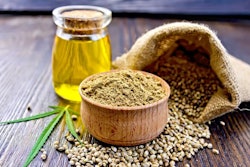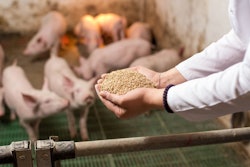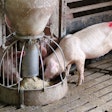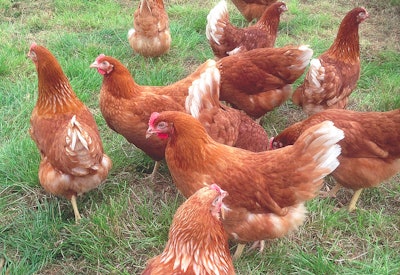
Considerations, challenges and successful strategies for organic monogastric feed production in Europe
Organic livestock feed producers must take into extra considerations to meet the nutritional requirements of organic pig and poultry meat. The availability and price of organically grown raw materials — and meeting amino acid requirements — remain an on-going challenge. However, despite limited options for raw materials and additives, certain areas of this niche market are growing.
Organic considerations
Most of the raw materials used in organic diets must be organically certified. As the organic accreditation bodies may have different requirements, feed producers must understand the standards pertaining to their customers. For example, some organic certification systems allow around 5% of the raw materials to be non-organic.
Nonetheless, certain raw materials are prohibited, including:
- Materials produced with the use of genetically modified organisms (GMOs) or products derived from them
- Synthetic amino acids
- Artificial colorants and flavors
- Ingredients that have been extracted using solvents
- Farm animal by-products.
Whereas in conventional diets produced in Europe the use of fishmeal is cost-prohibitive, it is used in organic diets to achieve amino acid requirements. However, if organic diets for pigs and poultry are being made in the same mill as diets for ruminant animals, fishmeal cannot be used due to potential contamination.
Organic raw materials
While there are organic cereal growers across Europe, much of their production goes into human food. Farmers can achieve higher prices from manufacturers making organic bread, breakfast cereals, snack bars, etc. As such, much of the cereals used by organic feed manufactures come from outside Europe. Ukraine is a common source of organic wheat, for example.
Protein raw materials are a further challenge. The majority of organic soybean meal currently comes from China, as does organic sunflower meal, used for its protein, energy and fiber contribution.
Additive issues
There is a wide range of additives available to nutritionists — enzymes, probiotics, phytochemicals, essential oils — but, for those producing organic feed, the options are very limited. Some of these products will be ruled out of organic diets due to the use of synthetic carriers or their production methods, e.g., solvent extraction or GMOs. Others are maybe entirely naturally derived but lack the relevant organic accreditation.
Unfortunately, due to the small size of the organic market, many additive manufactures don’t have organic certification. While there are positive lists for ingredients in organic feed, they can be listed separately and may be different for different accreditation bodies and countries.
Combination additives can also be an issue. For instance, the addition of a specific organic acid may be allowed but including a blend would need specific approval. There are no heat-stable phytase products approved as organic, although certain carbohydrases are available. This means that choices to improve digestibility and efficiency are also limited.
To ensure animal welfare, antibiotics are allowed to be used in organic diets when animals are sick. A veterinary prescription and derogation for the organic certification body are required. The withdrawal period for medications, such as wormers, is often longer for organic production and the number of times they can be used in a flock is restricted.
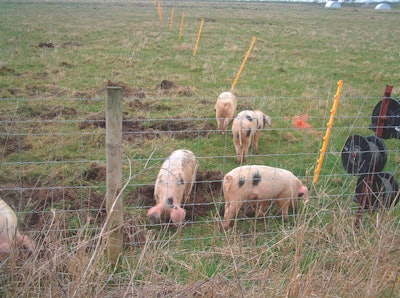 Growth rates in organic production are often limited, which results in the use of specific slower growing, more robust breeds suited to more extensive production systems. (Zoe Kay)
Growth rates in organic production are often limited, which results in the use of specific slower growing, more robust breeds suited to more extensive production systems. (Zoe Kay)Ingredients used in organic monogastric diets
In Europe, organic broilers are limited on growth rates, e.g., 50 grams a day. For this reason, energy levels and ratio to protein need to be managed. Slower growing breeds are used, which helps somewhat with the challenge of meeting methionine requirements. For this reason, fish meal is used alongside soybean meal, which results in organic broiler diets oversupplying protein by 2 to 3%, which has implications for cost and efficiency.
There is also, by necessity, less room for fiber than in conventional diets and more soy is used.
Meanwhile, feed manufactures see reductions in price differences between organic and conventional pig diets. One of the reasons is that there is more corn available as growers convert to organic along with a wider variety of raw materials available. Other main ingredients include barley, wheat, lucerne, sunflower, soy and peas.
As for broilers, the main challenge is methionine, so again fishmeal is used, particularly in starter diets. Similarly, this will lead to an oversupply of protein — typically 1 to 2%. These diets need to be more nutrient-dense and will often require the use of a small percentage of non-organic ingredients, such as sweet whey.
Barley will be used preferentially at 25 to 30%, along with wheat and 25 to 30% corn – balanced according to least cost formulation. Starter diets contain 5 to 10% fish meal reducing in later diets due to costs and the potential to taint meat. So, these diets contain 20 to 25% soy expeller. Structural fiber is important, although less so as animals have the opportunity to forage, e.g., sunflower will be used in sow diets to improve satiety.
The main objectives remain, meeting basic nutrient requirements while limiting wastage. In general, no enzymes are included in organic pig diets, although some contain an organic acid. Organic pigs will have different genetics, which are robust and slower growing, e.g., Duroc crosses are used as well as crosses with traditional breed such as the Gloucester Old Spot.
Feeding organic laying hens
Meeting the nutritional requirements for organic hens is less of a challenge than for broilers or pigs; however, similarly fishmeal will be used to achieve the desired methionine level. Wheat, barley, corn and soy will be utilized, along with sunflower.
The use of high protein ingredients means there is not much space left for fiber, so free choice provision is a useful option. In certain housing systems, the lower stocking density can result in sub-optimal densities. In which case, energy levels may need to be increased to ensure that egg size/number is maintained. Unlike for broilers and pigs, the same breeds are generally used in conventional and organic production.
Prairie meal, a concentrated corn product without starch, is often used, which, as well as adding to protein levels, also helps with yolk color. Pigments which would be added to conventional layer diets are not permitted in organic rations, although a concentrated alfalfa source can be used. These products add yellow pigments but not red, so yolks appear paler.
Sustainable future
If the market for organic eggs, pig and poultry meat continues to grow, the biggest challenges will be the availability of organic raw materials, the distance they travel and meeting amino acid requirements without oversupplying protein. These issues challenge the financial and environmental sustainability of this niche market.
Growing and producing your own feed is possibly the ideal situation for organic producers, fitting with many assurance schemes aimed to reduce the distance raw materials travel. This circular system improves sustainability as manure can be then spread onto arable crops.
For practical and cost reasons, this is becoming a popular option for organic egg producers, particularly where egg production is a diversification from arable production. However, due to scale, it isn’t suited to many organic broiler or pig producers.
In terms of organic diet marketing, it is difficult to add value with formulations focused on meeting basic nutrient requirements. It is important, therefore, for organic feed producers to have an open dialogue with organic accreditation bodies around raw material availability and additive use.



